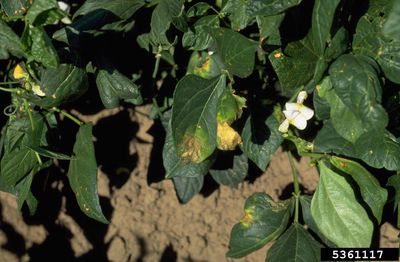Causes of Southern Peas with Burnt Leaves
Leaf discoloration and damage can come from many fronts. It may be disease, insect or animal pests, chemical drift, poor cultivation, bad soil fertility, or pH. The list goes on. Discovering what might be causing leaf burn on southern peas takes a bit of sleuthing. It’s best to start with the most common causes of the problem and see if one of those is the culprit. Bronzing is a problem in beans that are grown where there are high levels of ozone pollutants. The bronzing of the leaves can appear like a sunscald or burn. Sunscald is not a common problem on peas but it does plague beans. Low soil pH can cause a reduction in absorbed minerals and nutrients. In sandy, dry soils, a common cause of leaf burn on southern peas is lack of potassium. Plant leaves may also appear to be burnt when water is withheld for too long. You should always do a soil test and amend the pH and nutrient levels of the soil before planting. Generous amounts of compost added to soil can enhance porosity, nutrient levels, and help conserve water without making soil boggy.
Diseases that Cause Leaf Burn on Southern Peas
Southern peas are prey to numerous fungal diseases. Many of these cause damage that mimics foliage burn. Several leaf spot diseases caused by fungi start as halo bordered lesions and age to dry plant material. Alternaria starts as shot holes in the leaf and broadens to bronzed dead material as does cercospora. Bacterial blight is not fungal but causes tan to brown leaf spots that appear similar to burnt material. No matter which disease may be plaguing the plants, the key to reducing the incidence of southern pea leaf burn is often sanitation. Fungal spores spread in water, wind, and on clothing and machinery. Remove all old plant matter at the end of the season, rotate crops, and sanitize equipment.
Chemical Burns
Southern peas with burnt leaves may also be the result of contact with some sort of chemical. This might be an herbicide, pesticide, or another preparation. Often, this occurs as a result of drift, where wind carries the chemical to unintended plants. It may also be a result of improper application of wanted preparations. Some chemicals, if applied in full sun, have the ability to burn leaves. They will also cause damage if applied at full strength or the wrong concentration. To avoid chemical burns, only apply sprays when winds are calm and follow all directions for any type of application.
